Cleveland Clinic plans to begin using drones to deliver certain medications directly to patients’ homes, starting in 2025.
Tag: Drones
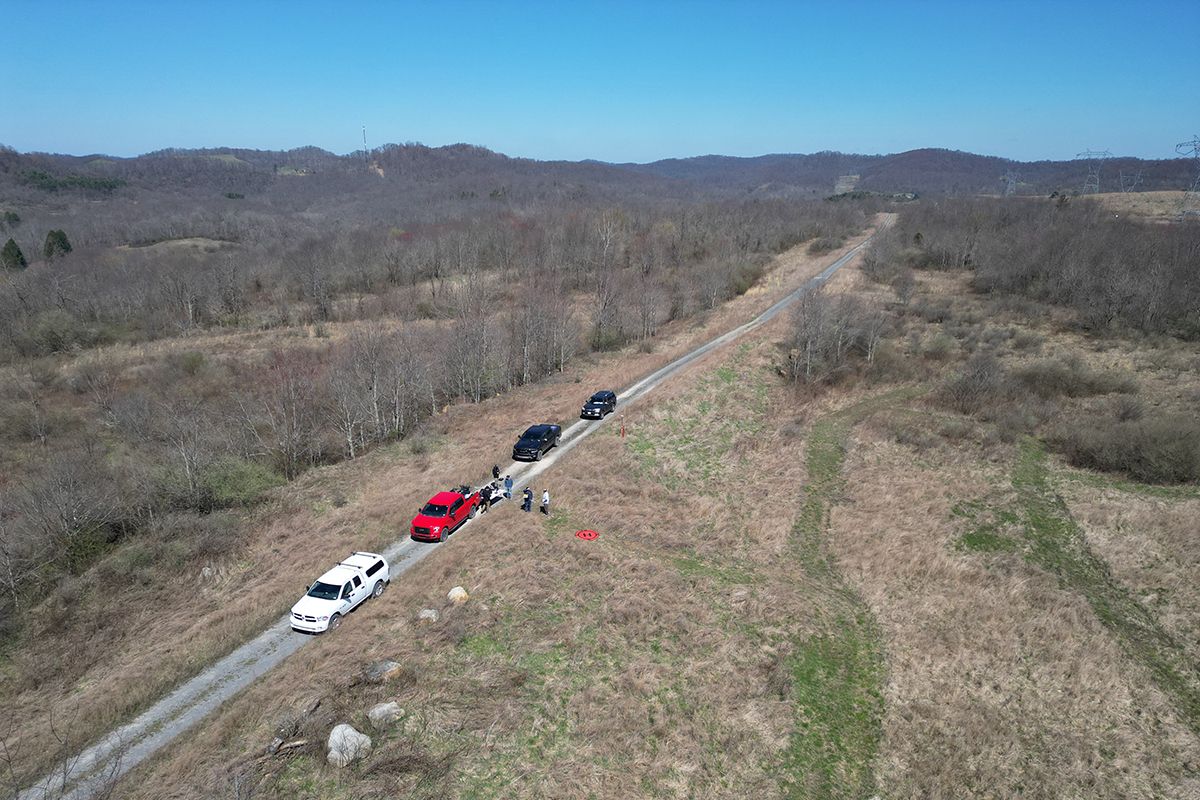
A new ‘war of the roses’: Researchers integrate sensors, drones and machine learning to target thorny pest
Multiflora rose may sound like a bountiful variant of the classic flowering bush, but its unexpected white blooms and red berries conceal one of Mother Nature’s sinister surprises: The invasive shrub is a thorny foe that threatens native plants in more than 40 states, including West Virginia and neighboring Pennsylvania.
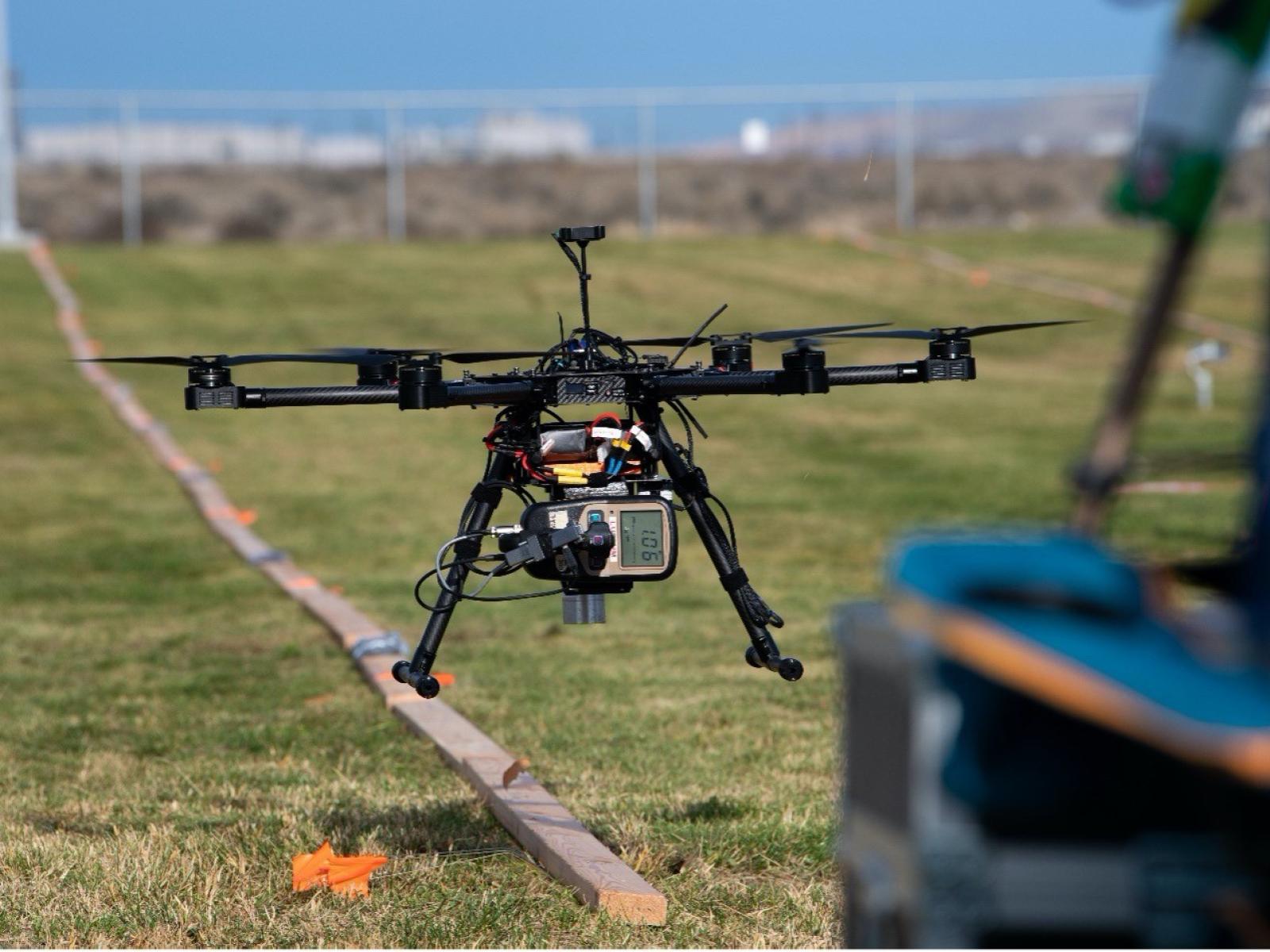
Drones Fly Low and Slow for Radiation Detection
Unoccupied aerial vehicles, better known as drones, have rapidly advanced from a quirky, high-flying novelty to a versatile workhorse.
Sensor research helps fight wildfires
As climate change leads to larger and more frequent wildfires, researchers at the Department of Energy’s Oak Ridge National Laboratory are using sensors, drones and machine learning to both prevent fires and reduce their damage to the electric grid. Engineers are honing technology to remotely sense electrical arcing and faulty equipment, as well as the direction of spreading fires.
New wind sensor uses smart materials to improve drone performance
Engineers have designed and successfully tested a more efficient wind sensor for use on drones, balloons and other autonomous aircraft.These wind sensors – called anemometers – are used to monitor wind speed and direction. As demand for autonomous aircraft increases, better wind sensors are needed to make it easier for these vehicles to both sense weather changes and perform safer take-offs and landings, according to researchers.
WVU engineers advance U.S. Air Force search and rescue missions in hostile territories with unmanned drones
Through a 21-month, $300,000 project with funding from the Small Business Innovation Research of the U.S. Air Force Laboratory and in partnership with Kinnami Software Corporation, engineers in WVU’s Benjamin M. Statler College of Engineering and Mineral Resources are making it possible for combat search and rescue operations to pinpoint isolated personnel without using radio GPS that can be intercepted.
Automated Drones Could Scare Birds Off Agricultural Fields
In the future, cameras could spot blackbirds feeding on grapes in a vineyard and launch drones to drive off the avian irritants, then return to watch for the next invading flock. All without a human nearby.
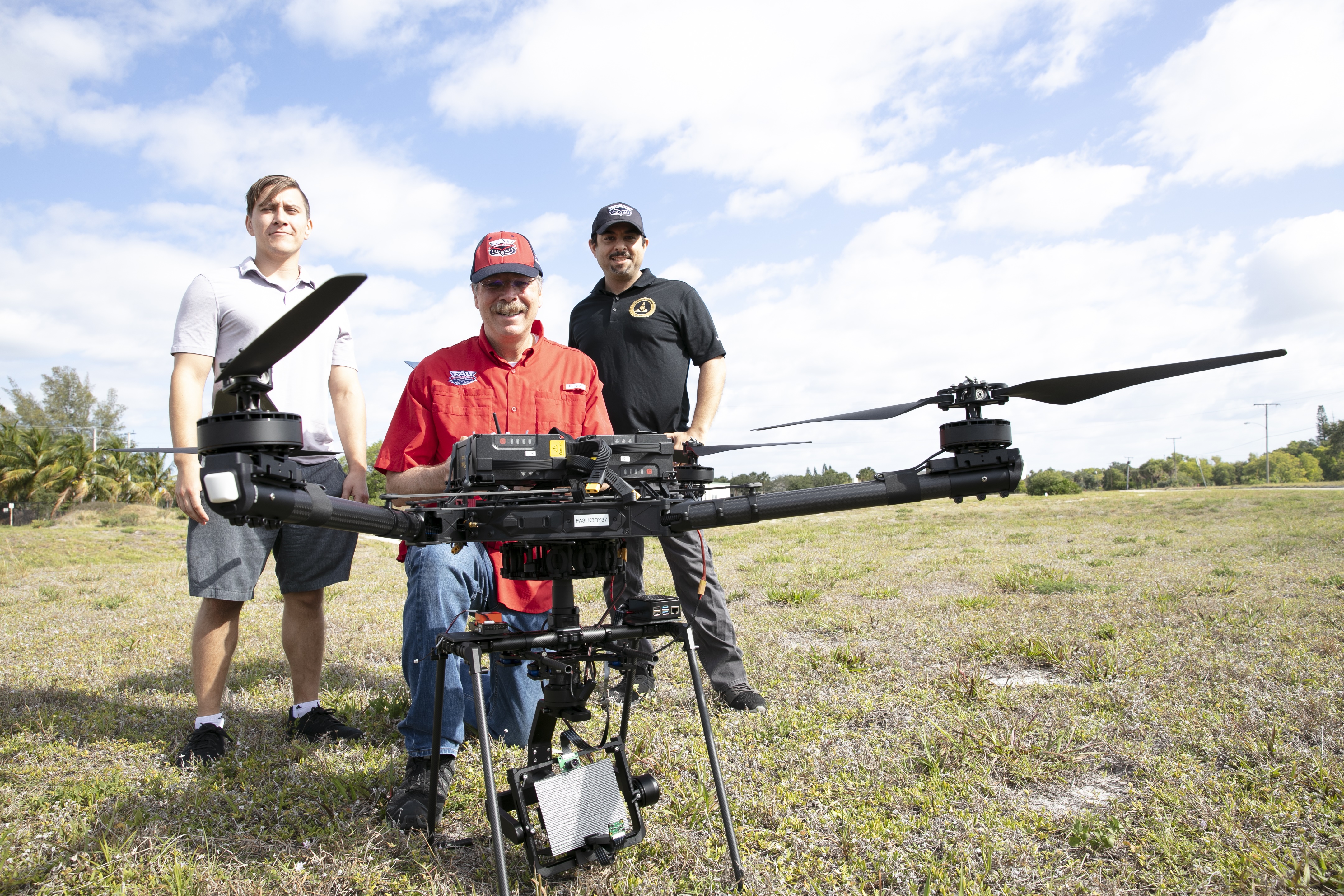
‘Beam Me Up:’ Nation’s First Quantum Drone Provides Unrivaled Security
Researchers are developing the nation’s first drone-based, mobile quantum network for unhackable wireless communication. The network includes drones, a ground station, lasers and fiber optics. In war, these drones would provide one-time crypto-keys to exchange critical information, which spies and enemies would not be able to intercept. Quantum protects information using the laws of nature and not just by a clever manmade code.
Real-time flood sensors, urban farms, autonomous cars, dancing drones and more at NYU Tandon’s Research Excellence Exhibit
The NYU Tandon School of Engineering will showcase over 40 innovative and future-forward research projects by faculty and students, along with interactive, family-friendly tech activities, at its 2022 Research Excellence Exhibit.The annual expo, in its ninth year, takes place on Friday, April 29, 1:00 p.m. to 4 p.m.
Drone helps researchers find fresh water in the sea at Easter Island
Researchers at Binghamton University, State University of New York have demonstrated the effectiveness of using drones to locate freshwater sources at Easter Island.
Acoustics in Focus: Virtual Press Conference Schedule for 180th Meeting of Acoustical Society of America
Press conferences at the 180th ASA Meeting will cover the latest in acoustical research during the Acoustics in Focus meeting. The virtual press conferences will take place each day of the meeting and offer reporters and outlets the opportunity to hear key presenters talk about their research. To ensure the safety of attendees, volunteers, and ASA staff, Acoustics in Focus will be hosted entirely online.
Future drones likely to resemble 300-million-year-old flying machine
University of South Australia researchers have drawn inspiration from a 300-million-year-old superior flying machine – the dragonfly – to show why future flapping wing drones will probably resemble the insect in shape, wings and gearing.

NAU leading NSF grant that looks at the potential for drones in responding to forest fires
The grant, led by SICCS professors Fatemeh Afghah and Abolfazi Razi and Regents’ professor Peter Fulé, will give firefighters a better situational awareness about the fire environment; provide up-to-date information on where the fire is; and help fire responders form reliable predictions about the fire activity.
Drones used to locate dangerous, unplugged oil wells
There are millions of unplugged oil wells in the United States, which pose a serious threat to the environment. Using drones, researchers from Binghamton University, State University of New York have developed a new method to locate these hard-to-locate and dangerous wells.

Greenland Melting Likely Increased by Bacteria in Sediment
Bacteria are likely triggering greater melting on the Greenland ice sheet, possibly increasing the island’s contribution to sea-level rise, according to Rutgers scientists. That’s because the microbes cause sunlight-absorbing sediment to clump together and accumulate in the meltwater streams, according to a Rutgers-led study – the first of its kind – in the journal Geophysical Research Letters. The findings can be incorporated in climate models, leading to more accurate predictions of melting, scientists say.
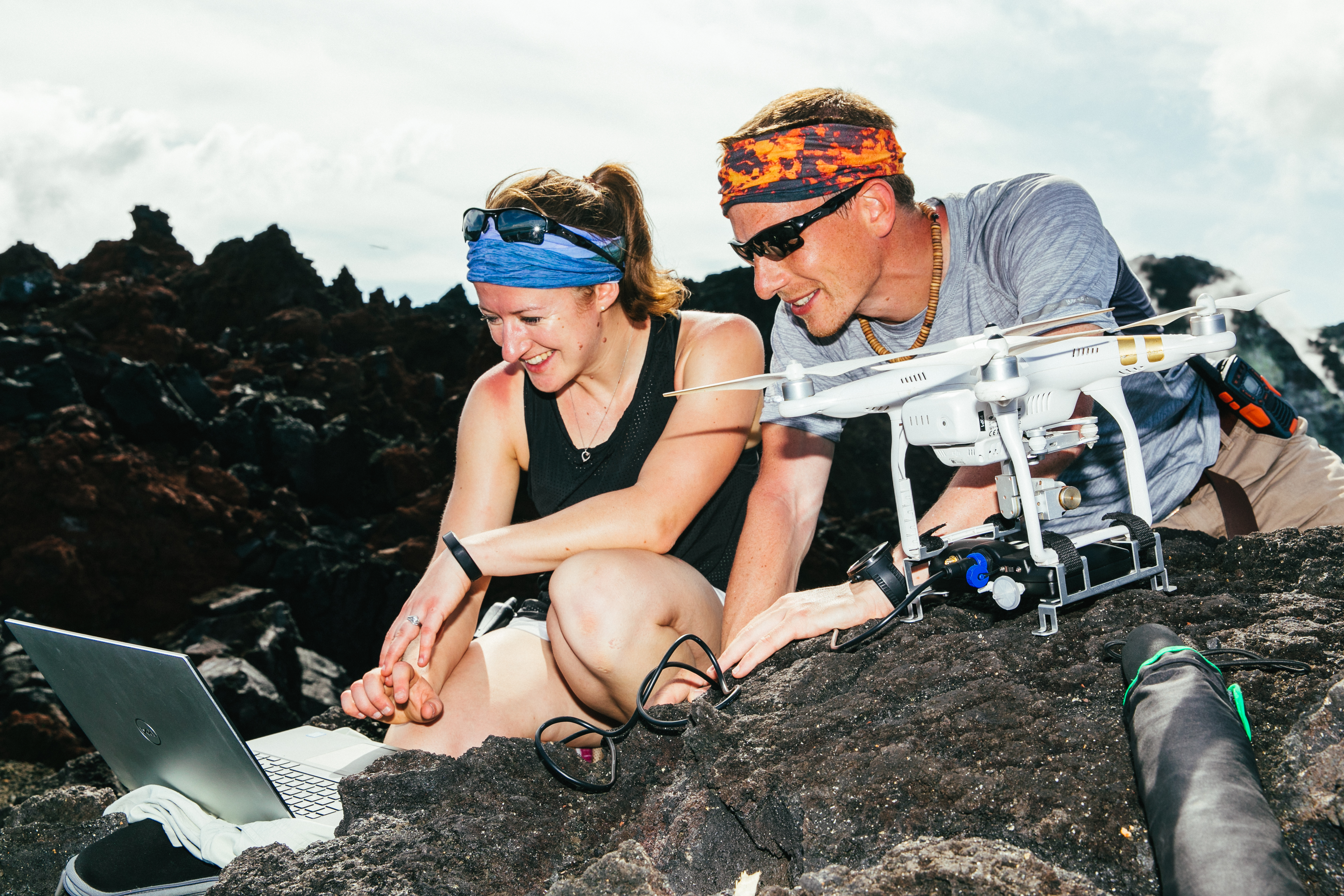
New drone technology improves ability to forecast volcanic eruptions
Specially-adapted drones developed by an international team have been gathering data from never-before-explored volcanoes that will enable local communities to better forecast future eruptions.
The cutting-edge research at Manam volcano in Papua New Guinea is also improving scientists’ understanding of how volcanoes contribute to the global carbon cycle, key to sustaining life on Earth.

Lily the barn owl reveals how birds fly in gusty winds
Scientists from the University of Bristol and the Royal Veterinary College have discovered how birds are able to fly in gusty conditions – findings that could inform the development of bio-inspired small-scale aircraft.
Airdropping sensors from moths: Researchers use flying insects to drop sensors from air, land them safely on the ground
University of Washington researchers have developed a tiny sensor that can ride aboard a small drone or an insect, such as a moth, until it gets to its destination. Then the sensor can fall up to 72 feet and land on the ground without breaking.

UIC receives $8M Army Research Laboratory grant for drone fuel sensor research
The University of Illinois Chicago has received an $8 million award from the Army Research Laboratory, or ARL, to support the development of specialized sensors to enable drones to use different types of fuel. They also will seek to advance hybrid-electric optimization, which has relevance for commercial drones and other vehicle types.

FAU Lands $11 Million from U.S. Office of Naval Research for Oceanic Bioluminescence
FAU’s Harbor Branch Oceanographic Institute has landed an $11,179,001 four-year contract from the U.S. Office of Naval Research to develop a next-generation, high-intake, compact, bathyphotometer sensor for natural oceanic bioluminescence assessments. Bioluminescent creatures are found throughout marine habitats and their “glowing” energy released from chemical reactions is used to warn or evade predators, lure or detect prey and communicate with the same species. Research surrounding bioluminescence will soon serve as an important tool to protect U.S. coastlines.
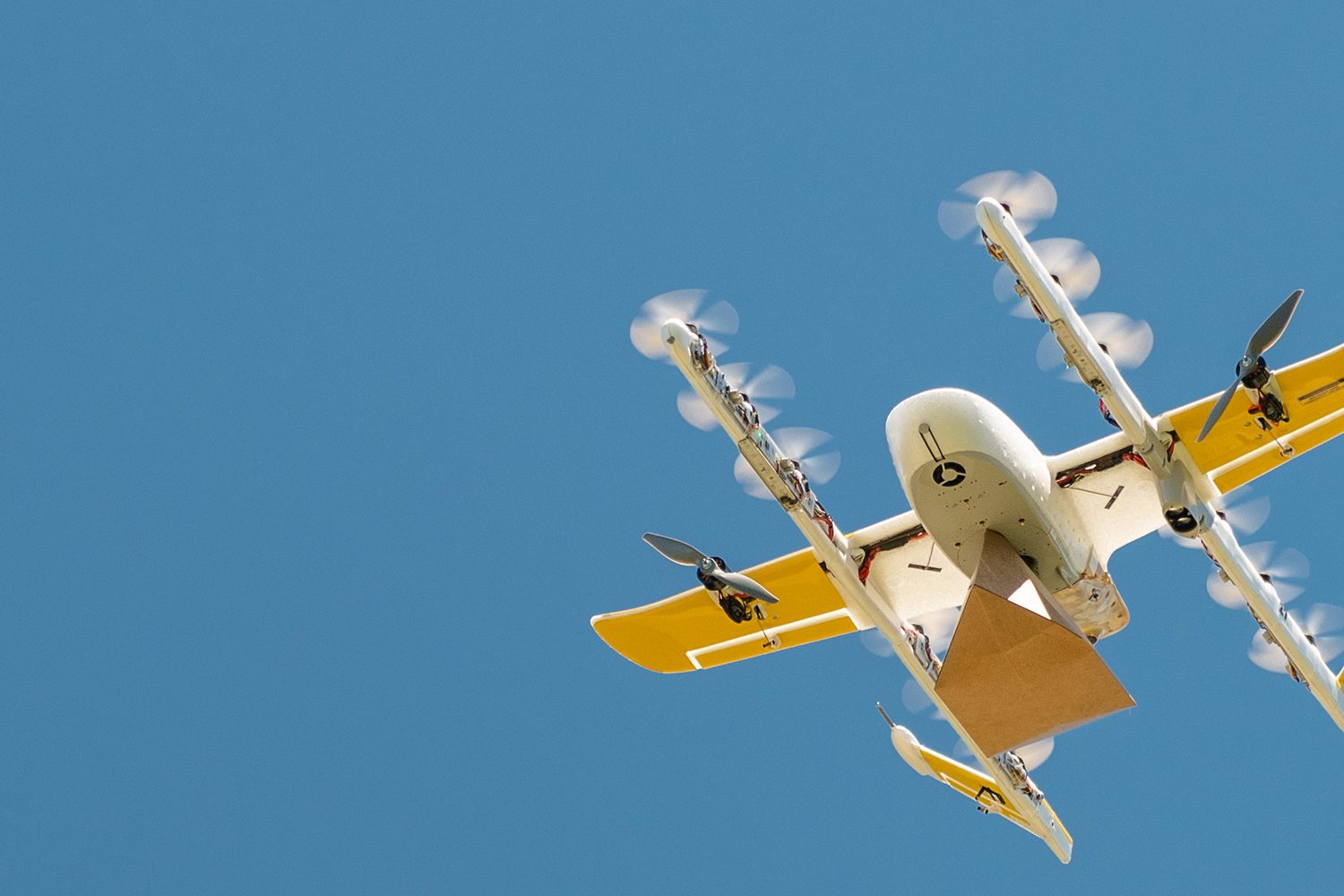
Drones deliver time savings to customers, new revenue to businesses
A new economic impact study from Virginia Tech suggests that drone delivery could offer a significant economic boost in communities.
Now you see it, now you don’t: adding chameleon-like capabilities to defence drones
In conjunction with Australia’s Department of Defence, University of South Australia material scientists have developed a range of lightweight panels that can change colour on demand, allowing drones to match their appearance to the background colours of the sky.
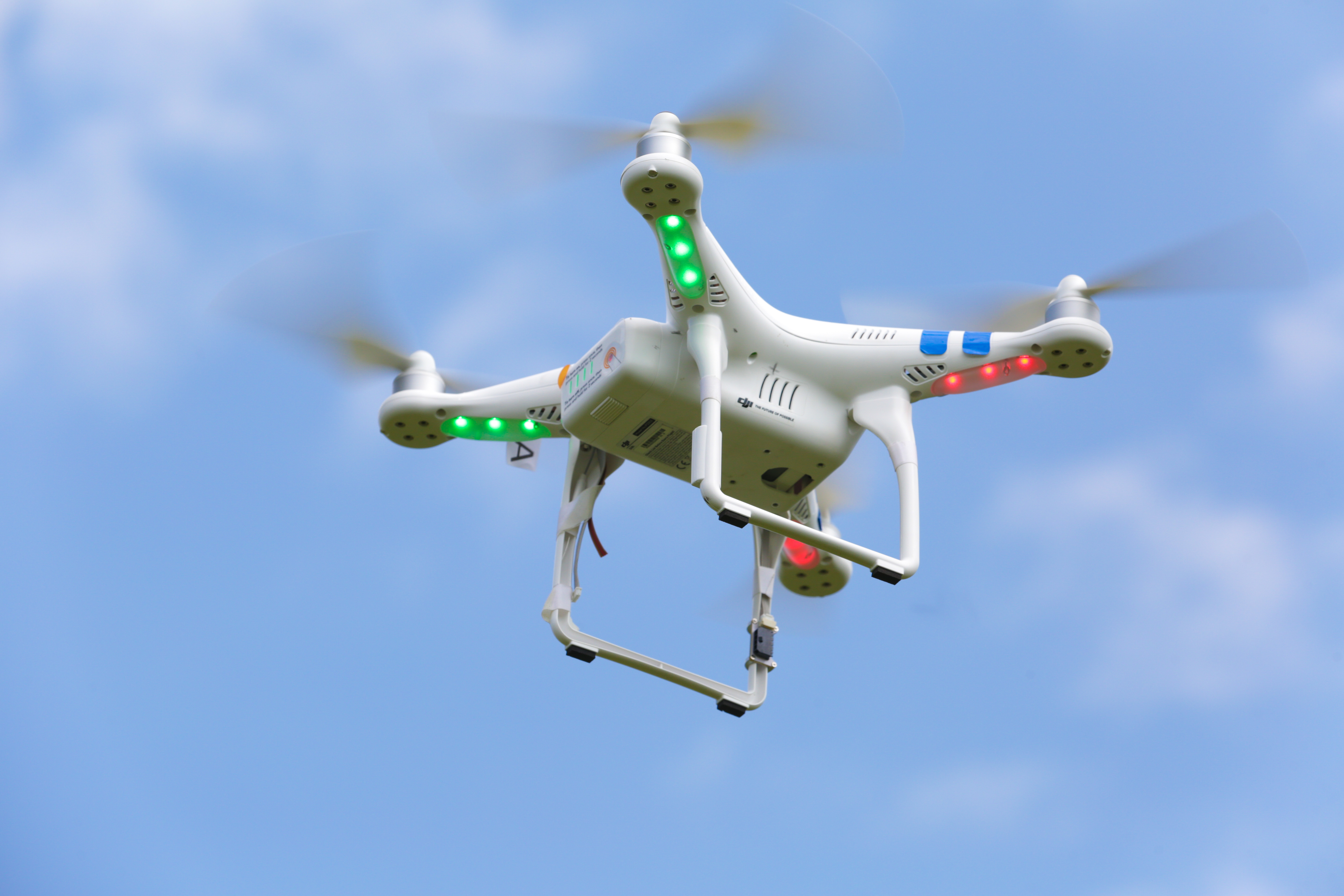
UAH gets $1.1 million grant as lead in research on safe use of drones in disasters
The University of Alabama in Huntsville (UAH) will receive $1.1 million of the $3.3 million in research, education and training grants awarded to universities that comprise the Alliance for System Safety of UAS through Research Excellence (ASSURE).

Horizon31 startup licenses ORNL global communication system for drones
Horizon31, LLC, of Knoxville, Tenn., has exclusively licensed a novel communication system that allows users to reliably operate unmanned vehicles such as drones from anywhere in the world using only an internet connection.
Rutgers Scholar Available to Discuss Use of Drones in News Gathering
John Pavlik, a Rutgers professor of journalism and media studies, is available to comment on new Rutgers research that examines how drones are shaping journalism, their role in immersive news content and potential ethical concerns. “Drones play an increasingly central role in…
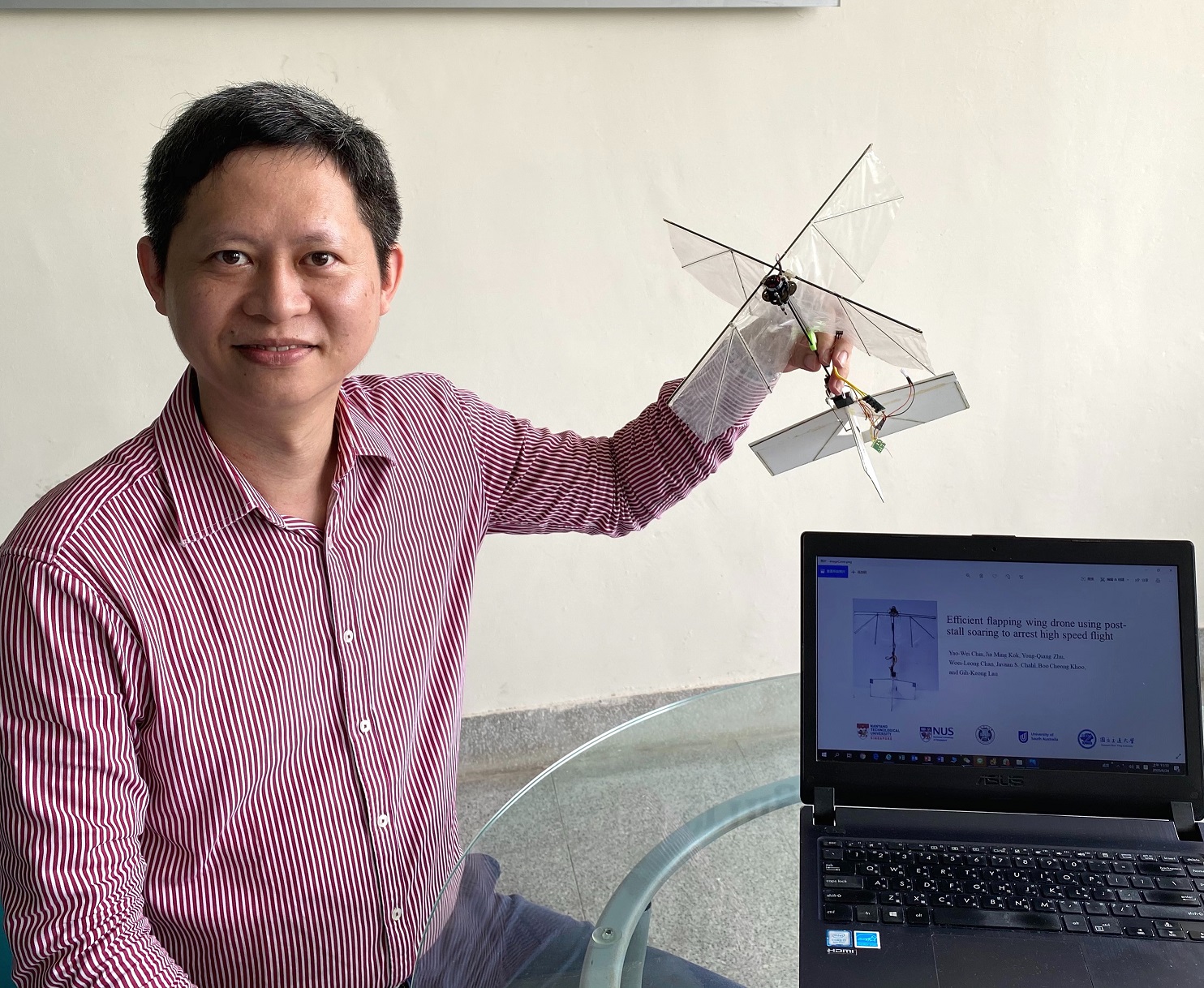
Is it a bird, a plane? Not superman, but a flapping wing drone
A drone prototype that mimics the aerobatic manoeuvres of one of the world’s fastest birds, the swift, is being developed by an international team of engineers in the latest example of biologically inspired flight.

Research firm Navatek to open Wichita State office; partnership will greatly grow military research
Navatek LLC, a contractor focused on technology research for U.S. government agencies such as the Department of Defense and NASA, is opening an office on the Wichita State University campus in fall 2020.
Researchers use drones, machine learning to detect dangerous ‘butterfly’ landmines
Using advanced machine learning, drones could be used to detect dangerous “butterfly” landmines in remote regions of post-conflict countries, according to research from Binghamton University, State University at New York.
Wichita State works with WPD to produce face shields for first responders
A relationship that started with friendship and drones is now helping produce face shields for first responders, a critical piece of equipment during the COVID-19 pandemic.
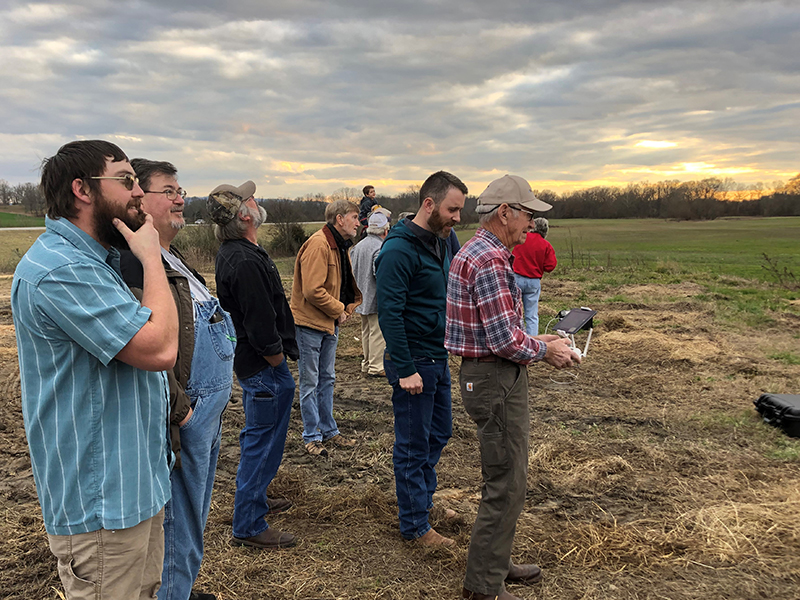
How drones can help farmers
With a little training, farmers and scientists can use drones to grow food more efficiently
Applying Deep Learning to Automate UAV‐Based Detection of Scatterable Landmines
Recent advances in unmanned‐aerial‐vehicle‐ (UAV‐) based remote sensing utilizing lightweight multispectral and thermal infrared sensors allow for rapid wide‐area landmine contamination detection and mapping surveys. We present results of a study focused on developing and testing an automated technique of…
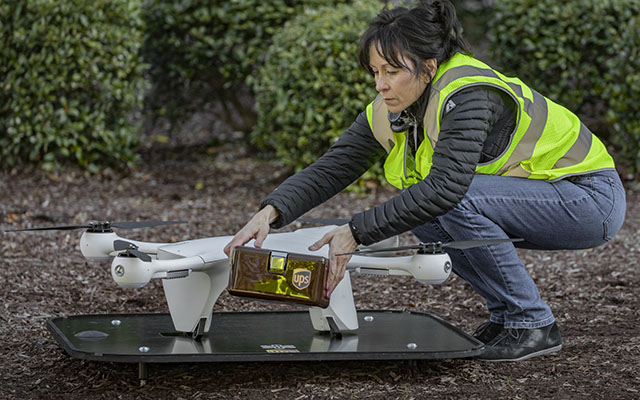
UC San Diego Health Launches Drone Transport Program with UPS, Matternet
UC San Diego Health launches pilot project using drones to move medical samples, supplies and documents between Jacobs Medical Center, Moores Cancer Center and the Center for Advanced Laboratory Medicine, speeding delivery of services and patient care currently managed through ground transport.

MITRE Unveils Laboratory Focused on Autonomous Technology
In MITRE’s Mobile Autonomous Systems Experimentation (MASE) Laboratory, team are researching ways to accelerate advanced autonomous technology and provide objective perspective and recommendations for broad impact in multiple domains, including drones, commercial aircraft, tanks, and self-driving vehicles.
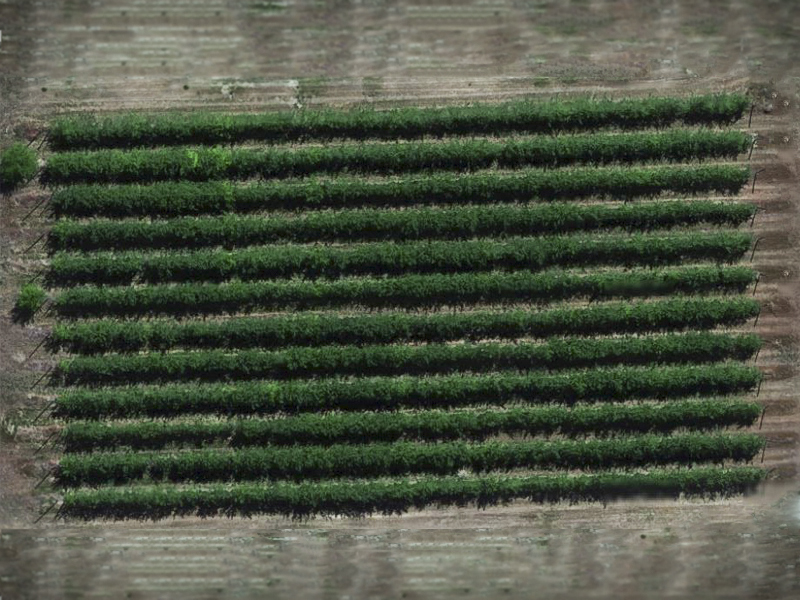
Drones effective tools for fruit farmers
Unmanned aerial vehicles provide reliable, accurate data to growers.
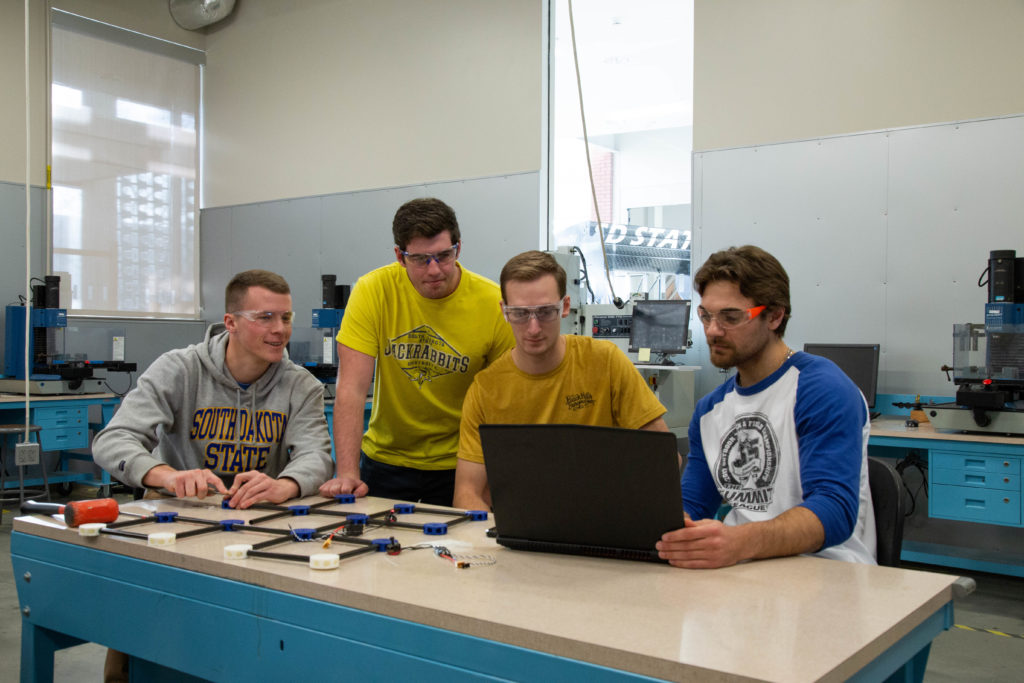
Engineering students to build human-carrying drone
Engineering students at South Dakota State University are designing a drone large enough to carry a human for their capstone senior design project through a nearly $80,000 grant from NASA.
Wireless networking researcher wins Air Force’s Young Investigator Award for research into smart drones
Northern Arizona University assistant professor Fatemeh Afghah is one of 40 recipients of the grant, given to foster creative basic research in science and engineering, enhance career development and provide opportunities for engineers to address military challenges in science and engineering.
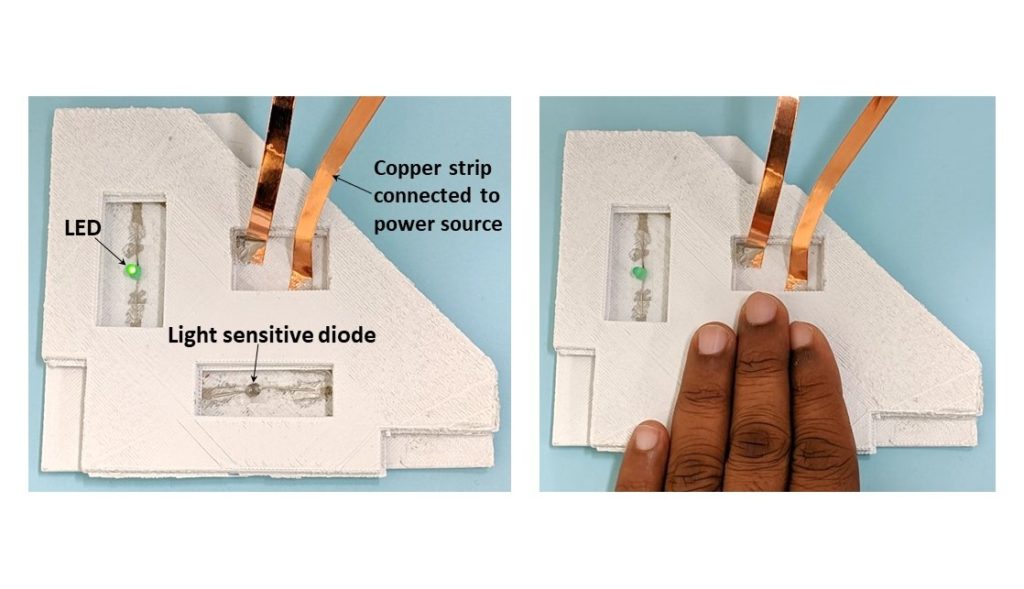
3D-Printed Plastics With High Performance Electrical Circuits
Rutgers engineers have embedded high performance electrical circuits inside 3D-printed plastics, which could lead to smaller and versatile drones and better-performing small satellites, biomedical implants and smart structures. They used pulses of high-energy light to fuse tiny silver wires, resulting in circuits that conduct 10 times more electricity than the state of the art, according to a study in the journal Additive Manufacturing. By increasing conductivity 10-fold, the engineers can reduce energy use, extend the life of devices and increase their performance.
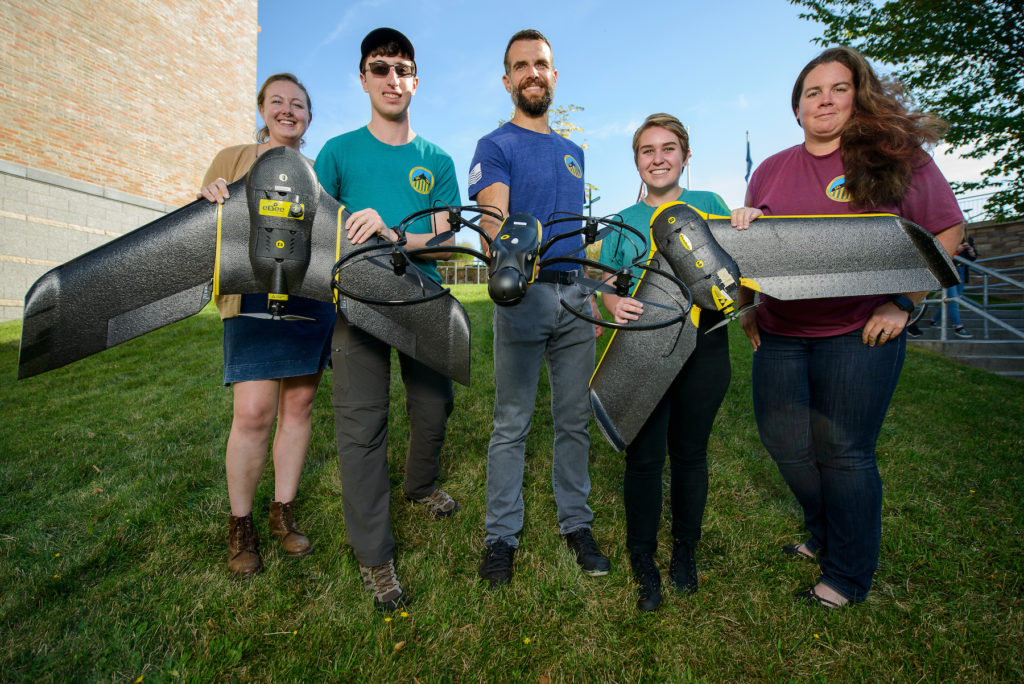
University of Vermont to Join FAA’s ASSURE Consortium
The University of Vermont will conduct research on the safe use of drones during emergencies for the Federal Aviation Administration as part of the FAA’s Alliance for System Safety of UAS through Research Excellence, or ASSURE. The university has just joined the consortium of research universities.
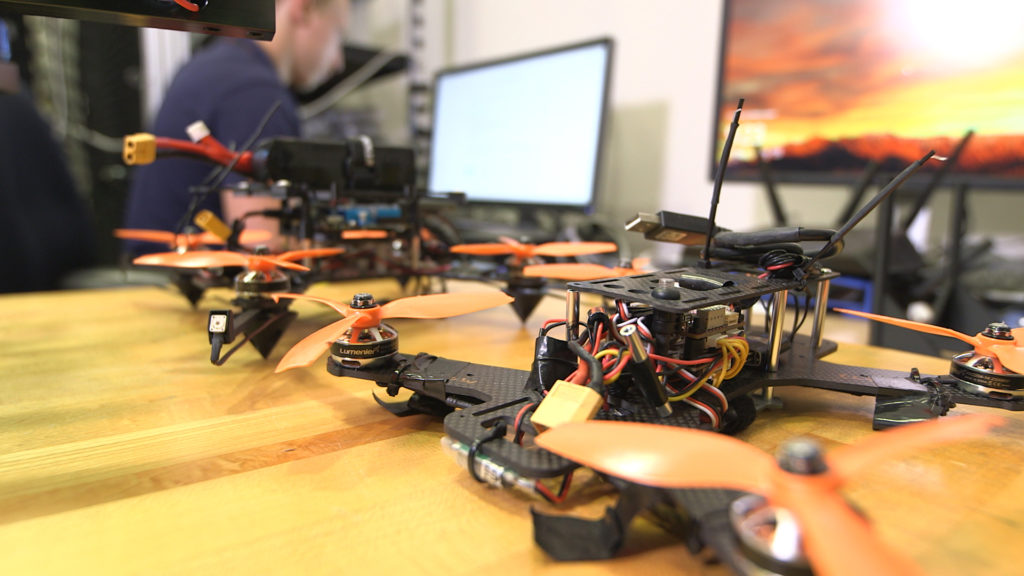
Autonomy New Mexico interns build drones to test hypersonic tech
A team of college interns at Sandia National Laboratories has built autonomous drones to try out new navigation, guidance and control, and target recognition techniques ultimately bound for autonomous hypersonic vehicles.
ASSURE announces results of UAH-led drone ground collision study
The ASSURE research team released the findings of its 18-month air to ground collision study of small unmanned aircraft systems (sUAS) at a press conference on Wednesday, Aug. 14, at UAH.